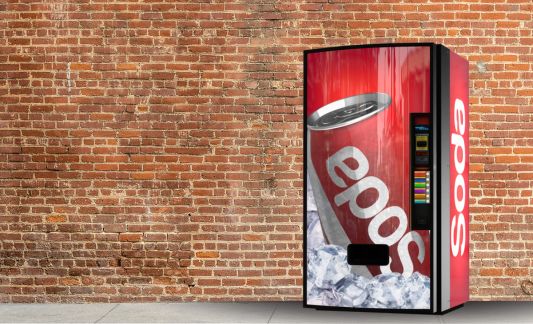Help Isom IGA recover from devasting floods

I hear it all the time: eventually people have to come back to work, right?
Everywhere I go in the U.S. and other countries, as I talk to retailers, manufacturers, service providers, and wholesalers, managers are wondering when workers will actually start, well, working.
During the pandemic, millions of workers worldwide lost their jobs or were temporarily out of work. And government subsidies in most (but not all) countries internationally allowed many workers to stay home. And it seems many didn’t return – as of the end of July, there were 11.2 million unfilled job openings in the United States alone.
For those of us who have worked every day of our lives, often since we were teenagers, it boggles the mind to think of people just deciding to not work. How are they surviving? What are they doing to feed their families? How are they filling up airports and malls and luxury goods stores?
A lot of us thought that when the government subsidies ran out, workers would come back. But that hasn’t happened. And in countries with very little or no COVID subsidies, they have the same issues. From Australia to China to Canada, the global grocery industry is facing a massive labor shortage.
Which means hoping that these workers will magically come back is dangerous thinking. If you find yourself saying, “With inflation so high, these workers will have to come back,” is a good story but potentially false because it seems that many of the people who were in service and warehouse jobs are just not interested in coming back. Where did they go?
Where The Workers Are
For the ones who quit and haven’t come back to work, many were older workers who have figured out how to retire. These workers just aren’t coming back. Another large group were two income families with children. Many of them figured out how to live on one income, or how not having to pay for childcare improved their family economics. Chances are they aren’t coming back until their kids are much older.
But the majority who quit are employed – they simply took new jobs. And there is the message for those of us in the service industry. They fled retail, restaurant, manufacturing, and wholesaler jobs and improved their lives. According to a Pew Research study this year, “At least half of these workers say that compared with their last job, they are now earning more money (56%), have more opportunities for advancement (53%), have an easier time balancing work and family responsibilities (53%), and have more flexibility to choose when they put in their work hours (50%).”
How To Attract Workers To Your Business
The message here is clear: We have to stop hoping workers will come back. Hope isn’t a business plan; it isn’t a strategy, and it won’t change our fate.
Instead, we need to listen. COVID-19 taught millions of workers that they didn’t have to settle. And as a result, their quit jobs where they felt underappreciated. I have talked to dozens of IGA and non-IGA owners all over the world about this problem and there are some who are having better results attracting and retaining associates. Way better results: 95% filled positions versus the average of less than 80%.
Consider these tactics:
- Start by listening to your existing team – gather them together and ask them what they like about their jobs and what they wish they could change. Ask them to help you write a plan to attract more people. Expect some feedback about pay, but most of it will be about flexibility, opportunities for advancement, and other non-pay issues. Really listen to what they have to say.
- Conduct a ‘depositioning’ exercise. Write the sentence “Compared to competitor X, we are better place to work because of what?” If your list is long, then put it into your job ads. If the list is short, you have work to do.
- Engage your advertising team and put on your marketing hat. Review your messaging and how you describe your business. Independent grocery stores are great places to work, but potential workers won’t know unless we market our advantages. Remember that hiring is a form of marketing; it’s just a different target than consumers.
- Create a finder bonus for people who bring their friends or family in for interviews, with a second bonus if that person stays for 90 days or longer. That way they recruit people who are likely to stay and help ensure they make it. After all, happy workers will recruit their friends.
- Respect your workers. Several retailers and manufacturers have renovated break rooms and employee restrooms. One retailer explains, “If it isn’t a place where your kids would feel comfortable hanging out, why would we expect our employees to spend time there? It's all a form of respect.”
- Invest in training or use the IGA Coca-Cola Institute library, as trained associates stay longer. Retention is almost twice as high for associates who have completed four courses as those who had no classroom or online training. Take this seriously.
- Use the power of celebrity. Workers today want to feel appreciated, and they want to share their accomplishments with family and friends. Younger workers in particular want credit for coming up with new ideas. Many of the higher performing retailers let their associates post about the store on Facebook and Instagram or let them record live for those platforms when they do store events. (Did you know the IGA Coca-Cola Institute offers stickers, badges, and icons that associates can post to their Instagram, Twitter, and Facebook accounts?)
- Show off growth opportunities. The number one answer most workers gave for leaving their service job was, “No opportunity for advancement.” Retail is one of the best places to start a career and our jobs often lead to advancement within our companies or in the industry. When you attend NGA or FMI conventions and see people up on stage with big titles, chances are every one of them started off as baggers, cashiers, in the warehouse, or lot boys. Tell this story.
- Recruit from the gig economy. Sure, Uber, Shipt, and Instacart got a lot of workers who fled full time work for flexible gig-economy jobs. But the reality is, the average worker in those jobs is making $13-$15 an hour. Combined with rising fuel and maintenance costs and the grind of being constantly behind the wheel of a car, these gig jobs are losing a lot of their appeal. They know you and your store – engage them with the question, “What would it take for you to come work for me?”
- Recruit from restaurants, especially national chains. Workers in the restaurant industry feel betrayed because they lost their jobs during the first year of the pandemic. Though retail jobs are not easy, they are often way more attractive than the late nights and emotions of food service. Says one retailer, “I changed the name from deli manager to chef, recruited from people sick of restaurants, and filled my open deli positions. Food quality improved, too, because they brought those skills to my store.”
These tips come from retailers who are making it work. But beyond just these tips, you must change your mindset and stop waiting for workers to come back. We must up our game, market our jobs, and improve the offering. Do that and we are in control of our fate!
A version of this column ran in The Shelby Report on September 29, 2022. View it here.
You May Also Like
These Stories on From the Desk of



No Comments Yet
Let us know what you think